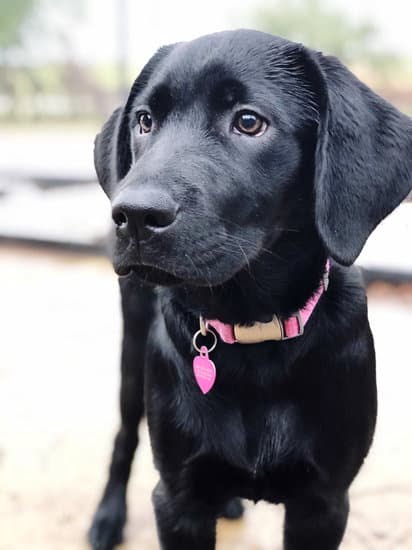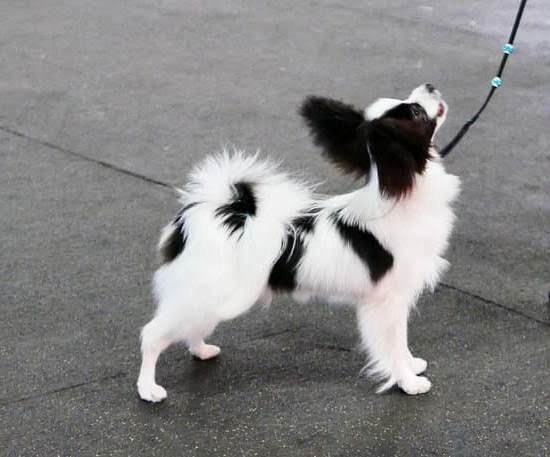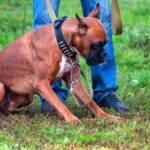Introduction
Potty training your dog is one of the most important things you can do to ensure a healthy and happy lifestyle for both you and your pet. Teaching your dog to use the bathroom in the proper area can prevent accidents in the house, reduce or eliminate bad behavior, and also increase overall bonding between you and your furry friend.
Benefits: There are several benefits of potty training a Dog. Firstly, it will decrease the potential for messes in the house. Showing your pup where they should go when they need to be relieved of themselves will keep the rug clean and avoid any uncomfortable accidents. Secondly, a trained dog is usually a calmer and happier dog, since they know what is expected of them and this reduces stress levels. Lastly, having an adorable puppy trained to relieve itself where it’s supposed to makes both owners and visitors happy.
Challenges: Potty training a Dog may come with some challenges as well; depending on age, breed, personality and previous habits it can take several weeks (even months!) before your pet fully grasps their new routine. It may require patience, consistency, dedication and lots of positive reinforcement from you as their trainer. Furthermore, newborn puppies may find it difficult to control when they have to do their business so special considerations might be necessary during these early stages of their lives.
These are just some overview points when it comes to potty training a Dog but if done right it doesn’t have to be too difficult. Now that we’ve gone over the benefits and potential challenges let’s look at how actually teach your pup different aspects of potty training:
Choosing the Right Potty Training Method for Your Dog’s Unique Needs
When potty training a dog, it is important to assess their individual needs and choose an appropriate method. Every dog is different, so the same methods may not work for all dogs. Before beginning, you should evaluate your pup’s personality and lifestyle to find out which method would work best. Some of the most common potty training methods include crate training, positive reinforcement, and regularly scheduled breaks or trips outside.
Crate Training involves using an enclosed area such as a kennel as part of potty training for your dog. Crate training encourages pups to learn how to hold their bladder until they have access to a proper bathroom area such as a backyard or park. Many experienced pet owners prefer crate training since it can effectively train puppies with little room for error – time spent in the crate will drastically reduce accidents in the house!
Positive reinforcement is another popular potty training method that relies on rewarding good behavior with treats or verbal affirmations. Establishing verbal cues whenever your pup uses the bathroom like “yes” or “good job” will help reinforce positive behaviors over time. Additionally, always praising when they do go outside instead of punishing them when they go inside should encourage them to use only designated potty areas in the future!
The third method is scheduling regular breaks or trips outside during times when your pup has been most active recently or right after eating/drinking anything large amounts of liquid/food. Scheduling regular outings helps create consistency within the routine and will encourage your pup to start thinking about their next potty break well before they need it! Over time this will condition your pup into asking directly whenever they need to head outside – which is key if you ever plan on leaving them home alone for extended periods of time!
Finding an appropriate potty training scheme can be stressful and require patience from both you and your pup, but by choosing a specific method that works for your lifestyle and evaluating each situation accordingly you should be able to learn how to train your pup effectively over time!
Deciding Which Areas of Your Home to Include in Potty Training
Potty training a dog doesn’t have to be hard, but it does take a bit of effort. Before you can start the process, you need to decide which areas of your home to include in the potty training regime. Ideally, you should try and contain your pup’s area to just one or two rooms, so they don’t accidentally make messes in other places. Introduce furniture and other household items your pet isn’t allowed on, such as kitchen counters and tables. And then establish an outdoor spot for toileting—ideally the same place every time. It can help to put down potty pads or fake grass in the designated area indoors if this is where you eventually want your pup to eliminate. When it’s time for potty breaks, take your pooch outside first before allowing them access indoors again. Doing this over several days will help your pup to understand that different spots indoors and outdoors are used for different things. The more consistent you can be with these boundaries, the easier it will be for your pet to learn.
Establishing a Potty Training Schedule That Works for You and Your Dog
Making a potty training schedule is an important part of successfully potty training your dog. Having a plan in place allows you to be consistent and make sure that both you and your pup are on the same page when it comes to outdoor bathroom visits. Additionally, having a routine helps reduce accidents as dogs love to have structure and order in their lives.
The most important part of establishing a schedule is figuring out how often your dog needs to go outside. Generally, puppies aged between 8-10 weeks will need to visit the outdoors every hour or two. As they get older, they can begin to hold urine and feces longer and may only need to go out every four hours. It is also essential to consider factors such as breed, age, size, metabolism, time spent outside of the house, etc., when creating a toilet schedule for your furry friend.
Additionally, you must make sure you keep track of all the times that your pup visited the yard for ‘potty business’ – this helps build consistency with toilet trips. To make tracking easier, use an app or write down each bathroom break along with any special notes about it (e.g., stayed outdoors for 10 minutes today). This will allow you to identify potential issues with consistency quickly as well as help establish reasonable expectations for yourself and your pup during potty training. Finally, be sure that frequent toilet breaks are accompanied by praise or treats – reward good behavior; this will go a long way!
Dealing With Challenges
One of the biggest challenges while training a dog to use the potty is establishing rules and modifying your routine as needed. Start by setting guidelines for where you want your pup to do their business and stick to that routine. For example, if you want them to go outside, designate a specific area for potty breaks or instruction when it’s time to go and then reward them each time they do it correctly. Ensure that you take them frequently enough so that they understand what is expected of them. Consider creating a signal (such as making a noise or using the same phrase) when it is time for the dog to go outside, which will help reinforce the desired behavior.
At times accidents will happen even if your pup is doing well with their potty training – this is all part of the learning process! When accidents occur be sure not to scold them; instead calmly move them outdoors and encourage them once they finish in the correct spot so they know this is where you expect them to go in future instances. As part of successful potty training, maintaining consistency is essential; try sticking to an established routine as much as possible while being mindful of these types of variations that may occur over time and modify accordingly.
Managing Accidents and Reversing Bad Habits During Potty Training
Managing the accidents that inevitably happen during the potty training process is crucial. When an accident does occur, the best thing to do is remain calm and clean it up without making too much of a fuss. Never scold or punish your dog for having an accident indoors, as this can create negative associations with toilet training and stress out your pooch. Instead, be sure to praise them when they manage to make it outside in time!
It’s essential to stay consistent with the potty training process, as this will help speed things along and produce better results over time. Set a schedule of potty breaks and keep these times consistent each day until your pup has picked up on the routine. Scheduled break times should include both indoor potty exercises and trips outdoors, allowing your pup to learn how to transition between them. Additionally, try introducing treats or rewards for good behavior, as positive reinforcement can be highly effective in encouraging desired habits from pups.
Finally, if possible try reversing any bad habits which may have formed as a result of careless mistakes or neglectful housekeeping from before you started training. This could involve closing off any rooms where accidents are happening more often than not, or replacing that old stained carpet with some pet-friendly flooring material like tile or wood. Although costly and inconvenient for you at the time, this could pay off significantly in the long run by drastically reducing your pup’s future unwanted bathroom indiscretions inside your home.
Celebrating Success
When it comes to potty training a dog, rewards and positive reinforcement play an important role. A reward or treat should be given every time there is successful pottying behavior, so the dog will learn quickly that the desired behavior results in a positive outcome. You can give the dog food associated with praise or verbal rewards such as “good boy/girl,” “excellent,” etc., depending on your preferred choice. Offering toys and playing games can also help reinforce desired behavior as a reward as well.
In addition to food and verbal words of encouragement, physical contact also communicates positively to your dog that they’ve done something right. Petting your pup during and after successful potty trips will help them remember what they did and increase their enthusiasm for doing it next time. Furthermore, taking your puppy outside more frequently with regular schedule walks around the same area will help them become familiar with their designated “potty spot” and eventually establish better potty habits.
Conclusion
Potty training a dog is an important step for responsible pet ownership. It can help you build a relationship with your pet and ensure that their messes are in one controlled area. Establishing a consistent routine from the start of potty training will be essential to the success of your pup’s training overall.
With a consistent routine, your pup will quickly understand where they are expected to relieve themselves and what behaviors are allowed while they’re doing so. Not only will this help them learn faster, but it also offers several other benefits. For instance, it can cut down on accidents since your pup will develop an association between going outdoors and releasing their waste. This consistency helps create a reliable behavior that is easily replicated in different environments, such as while traveling or visiting family members’ homes. Finally, having a consistent potty training routine allows you to keep track of how often your pup goes outside to relieve themselves and find any possible medical issues that may be affecting urination frequency or fecal quality should anything arise. All in all, consistently following through with potty training makes for a happier and healthier pet-parent relationship!

Welcome to the blog! I am a professional dog trainer and have been working with dogs for many years. In this blog, I will be discussing various topics related to dog training, including tips, tricks, and advice. I hope you find this information helpful and informative. Thanks for reading!





